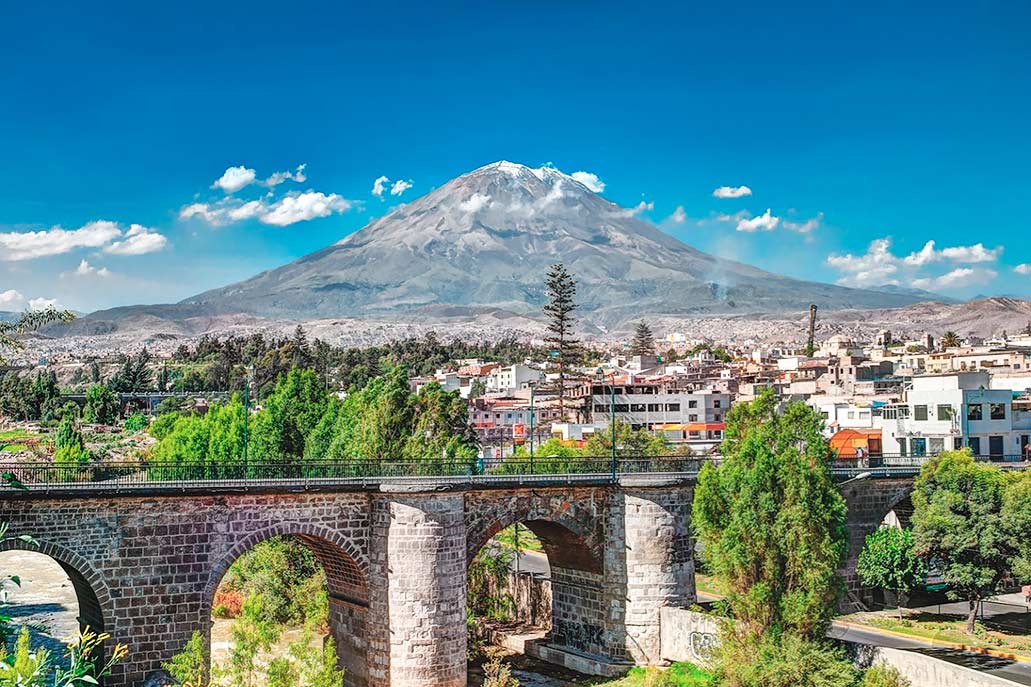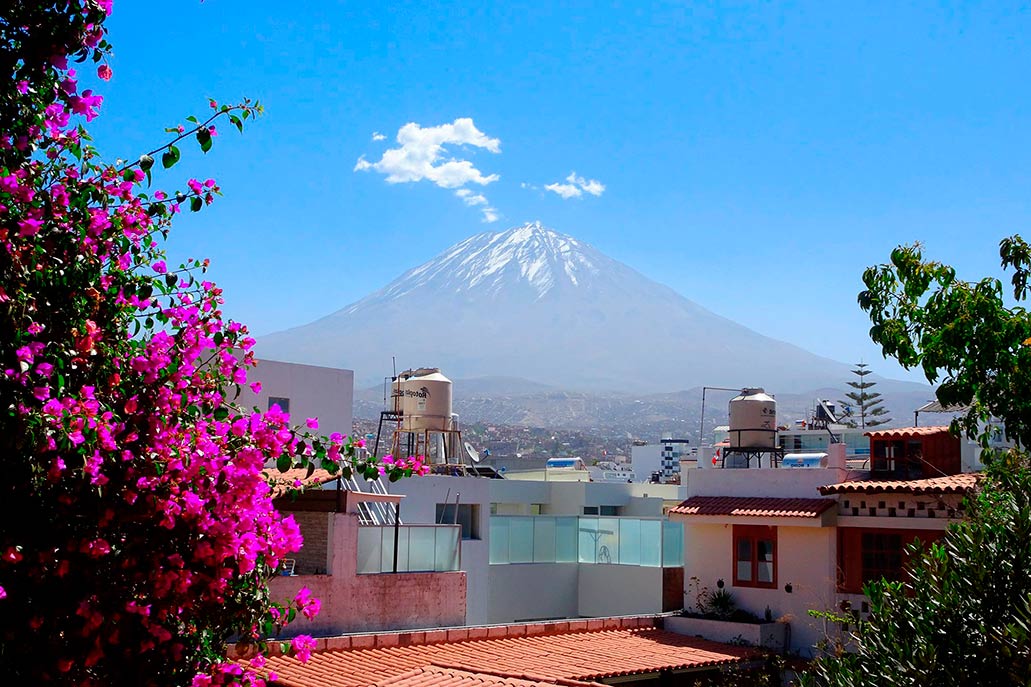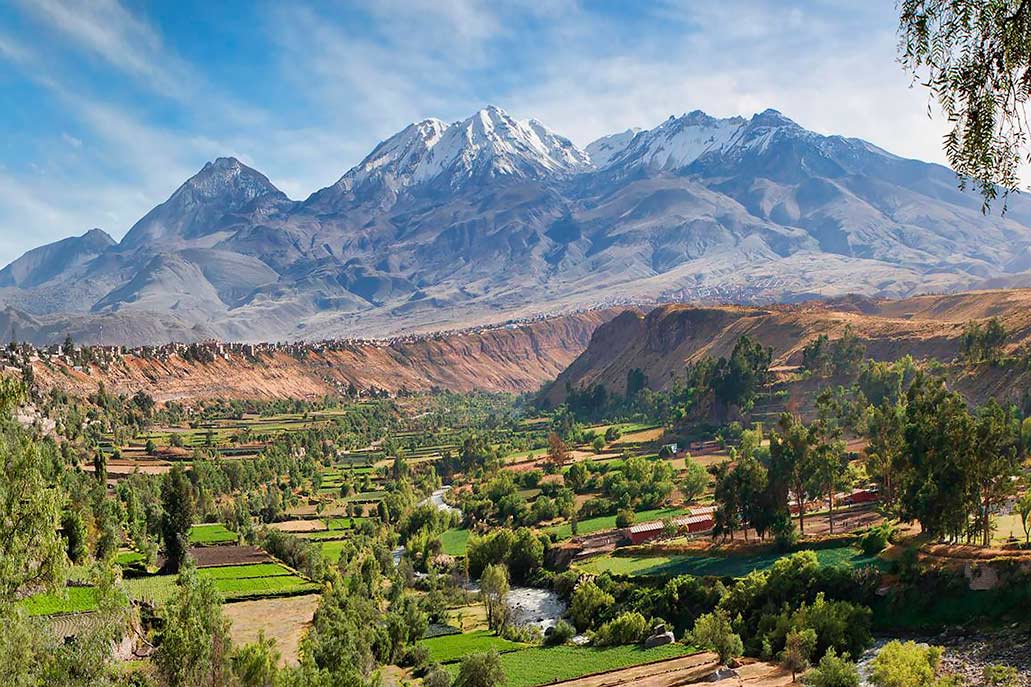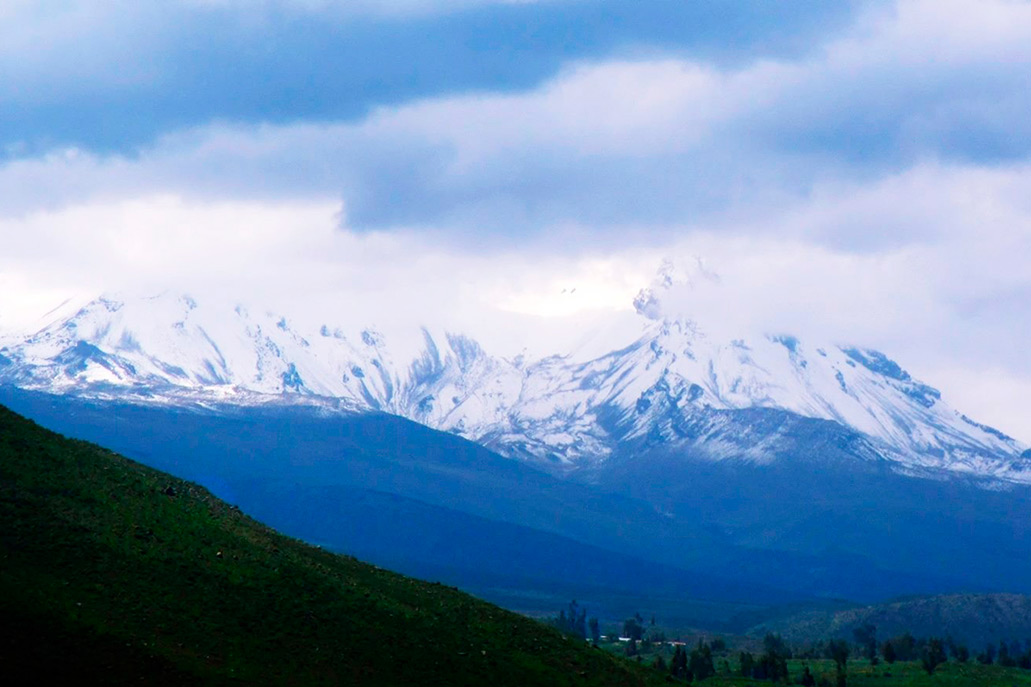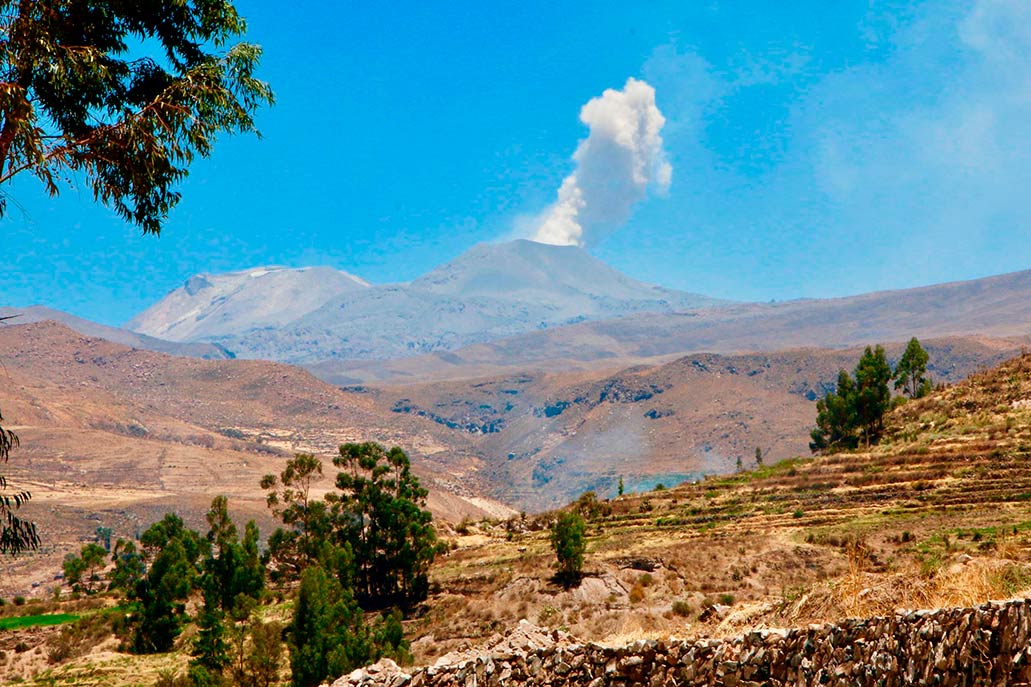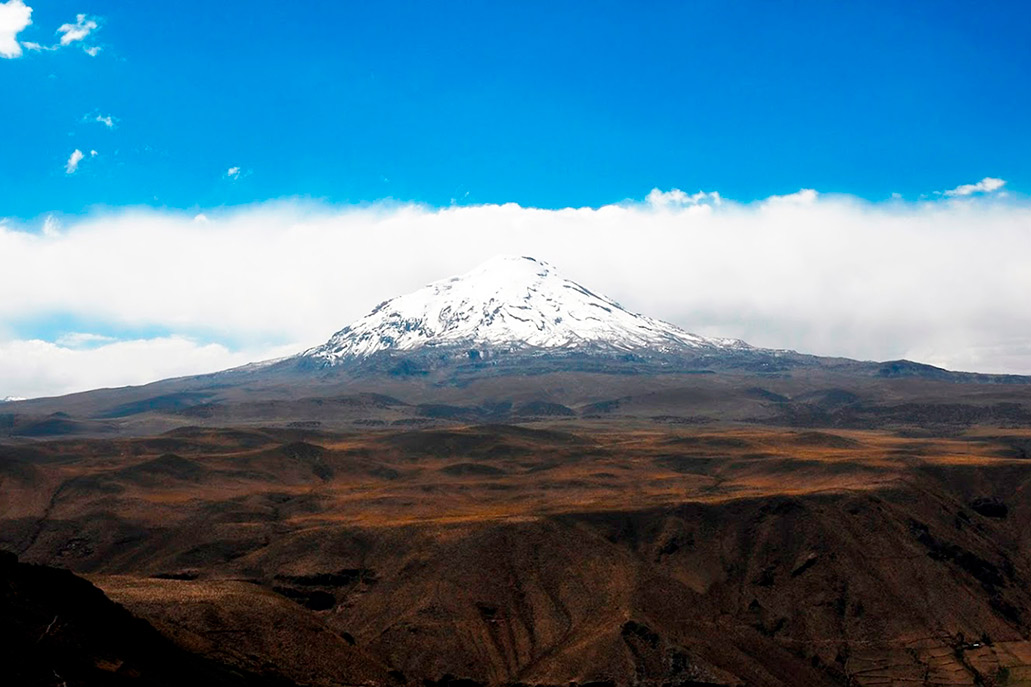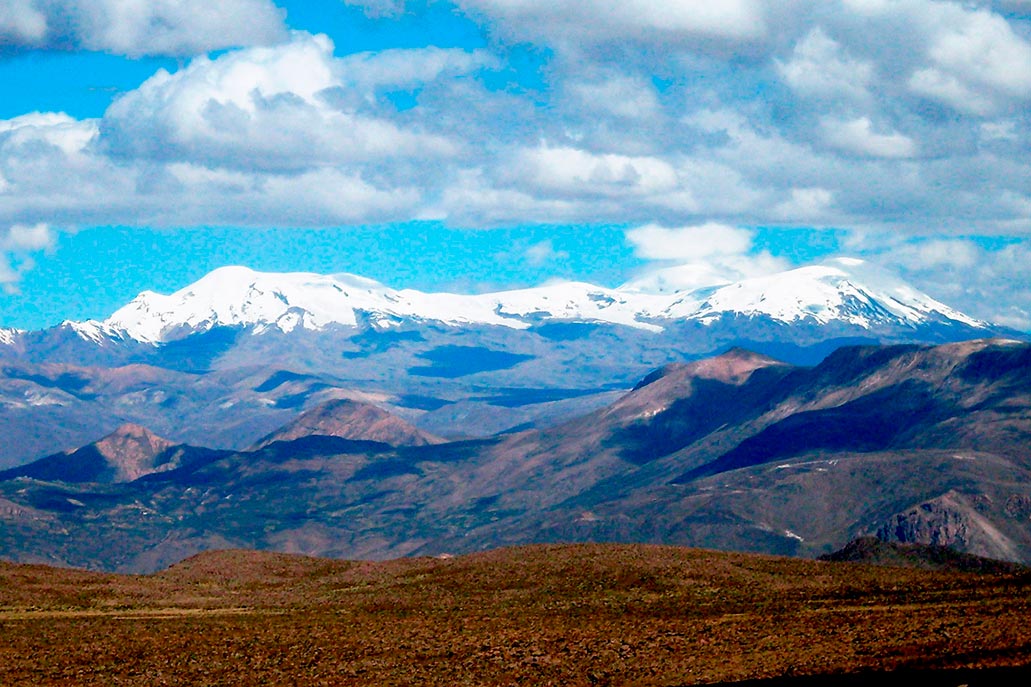The 7 volcanoes of Arequipa
Arequipa is a volcanic land. In its mountainous geography you can see high mountains and volcanoes of great scenic beauty. The most famous is the Misti, which adorns the ‘white city’. Next to it are the Chachani and Pichu Pichu volcanoes. But in this department of southern Peru there are more high-altitude volcanoes. Get to know them and go ahead and visit them!
Content
The Misti volcano
The Misti volcano is a symbol of all Arequipeños. Its top can be seen clearly from any part of the immense city. The white mantle of its top has diminished considerably in the last ten years. However, in the rainy season (January, February and March) it is still possible to distinguish its snow.
The Misti comes from a Quechua word that means ‘Great Lord’. It is an active volcano whose last activity dates back to 1985. That is why this volcano is also considered the most dangerous: at its feet is a city of more than 1 million inhabitants. Today it is possible to hire a tour to take a hiking route to its crater.
- Altitude: 5,822 meters above sea level.
- Location: Its top is 17 kilometers from the center of the city of Arequipa.
- How to get there?: By car from the city of Arequipa to the town of Chiguata. From there a walk with an overnight stay is carried out.
The Chachani volcano
The Chachani is one of the three volcanoes that guard the city of Arequipa (the other two are the Misti and the Pichu Pichu). This volcano is made up of four peaks in whose central part you can still see the crater and the lava inside. The top is in the northeast and is called Chachani (situated at 6,057 meters above sea level).
Despite the fact that the last activity of the Chachani occurred more than forty thousand years ago, the volcano is considered potentially active. Research indicates that gases can still be observed from its crater. His name, translated from the Quechua language, means ‘Brave’ or ‘Courageous’.
- Altitude: 6,057 meters above sea level.
- Location: Its summit is 55 kilometers from the center of the city of Arequipa.
- How to get there?: With a two-day hiking route. It begins with a drive to the Cañahuas pampas. There the walk begins.
The Pichu Picchu volcano
This volcano is also called ‘Sleeping Indian’ due to the existence of numerous Inca legends related to its religious importance. It is considered the smallest of the three volcanoes that surround the ‘white city’ of Arequipa. Near its top, three Inca mummies sacrificed in the famous ritual of the ‘Capacocha’ were found.
The Pichu Pichu is considered the oldest of the Arequipa volcanoes since its last eruption occurred millions of years ago. Geological studies indicate that the proximity of a new eruption is minimal. It has up to seven summits or peaks. The highest of all is located at 5,664 meters above sea level.
- Altitude: 5,664 meters above sea level.
- Location: Its summit is 32 kilometers in a straight line from the city of Arequipa.
- How to get there?: By car from the city of Arequipa to the slopes of Pichu Pichu. From there, the walk takes one or two days, depending on the tourism agency you hire.
The Sabancaya volcano
The name of this volcano comes from the Quechua word ‘Sahuancqueya’ which means ‘Volcano that spits’. It is located in the so-called Colca Valley, near towns like Chivay, Yanque, Maca, Cabanaconde and more (it belongs to the province of Caylloma). This volcano is part of a volcanic complex, also made up of Ampato and Hualca Hualca.
Sabancaya is an active volcano (actually it is the second most active in Peru). Its last eruption dates from 2016. The inhabitants of the Colca Valley have learned to live with its gas eruptions and telluric movements. At night it is even possible to appreciate incandescence near the crater of this volcano.
- Altitude: 5,976 meters above sea level.
- Location: Its summit is 70 kilometers northeast from the city of Arequipa.
- How to get there?: From the city of Arequipa by car to ‘Patapampa’, the viewpoint of the volcanoes. Then another route by car to the Sabancaya camp. There begins the 5-hour walk to its top.
The Ampato volcano
The Ampato is one of the most famous volcanoes in Peru for several reasons. It is considered a sacred mountain for the discoveries of mummies of children sacrificed in the Inca era. The most famous is the so-called ‘Mummy Juanita’, or ‘Lady of Ampato’. Her name comes from an Aymara word that means ‘Toad’. This refers to the shape of your massif.
The Ampato is an inactive volcano. Its last activity only emitted gray ash and it occurred between 1988 and 1998. It is located in the Colca Valley a short distance from towns such as Yanque, Cabanaconde or Chivay. There are multi-day hiking trails to get closer to its top. All of a duration of more than two days.
- Altitude: 6,288 meters above sea level.
- Location: 80 kilometers northeast of the city of Arequipa, in the Colca Valley.
- How to get there?: From the city of Arequipa a trip by car to the Sallali camp. From there a hiking route of 3 intense days is carried out.
The Hualca Hualca volcano
Hualca Hualca is a stratovolcano. On its sides are the Ampato and Sabancaya volcanoes. The Hualca Hualca is the oldest of the three. Is asleep or inactive. However, its north side has several volcanic domes with lava flows. Its geography is flanked by the famous Colca canyon.
The name Hualca Hualca refers to a Quechua voice that means ‘Necklace’, or ‘String of objects’. This is certain because of the shape of its massif. For the Incas this volcano was an ‘Apu’ or ‘Great Lord’ who deserved veneration. There the Incas performed child sacrifices in the famous ritual of the ‘Capacocha’.
- Altitude: 6,025 meters above sea level.
- Location: 165 kilometers from the city of Arequipa.
- How to get there?: Due to its remoteness and difficulty, a 5-day trekking tour must be hired.
The Coropuna volcano
The Coropuna is the highest volcano in Peru, located at 6,377 meters above sea level (masl).. It is also the third highest snow peak in the Andean country, only after Huascarán (6,768 masl) and Yerupajá (6,634 masl). It is made up of up to six snow-capped peaks. Its name comes from a Quechua word that means ‘Golden Mountain’.
The Coropuna volcano is considered ‘potentially active’. It is located in the middle of the Arequipa provinces of Castilla and Condesuyos. Its top is very glacial, with snow-capped peaks all year round. Due to its altitude it was considered by the Incas as an ‘Apu’ or sacred mountain. Today the inhabitants of the Cotahuasi province continue to consider it as a sacred mountain.
- Altitude: 6,377 meters above sea level.
- Location: 150 kilometers northwest from the city of Arequipa.
- How to get there?: From the city of Arequipa, travel by car to the Coropuna base camp. From there begins an arduous walk of 2,3 or 4 days, depending on the tourism agency you hire.
By Machupicchu Terra – Last updated, August 28, 2023
